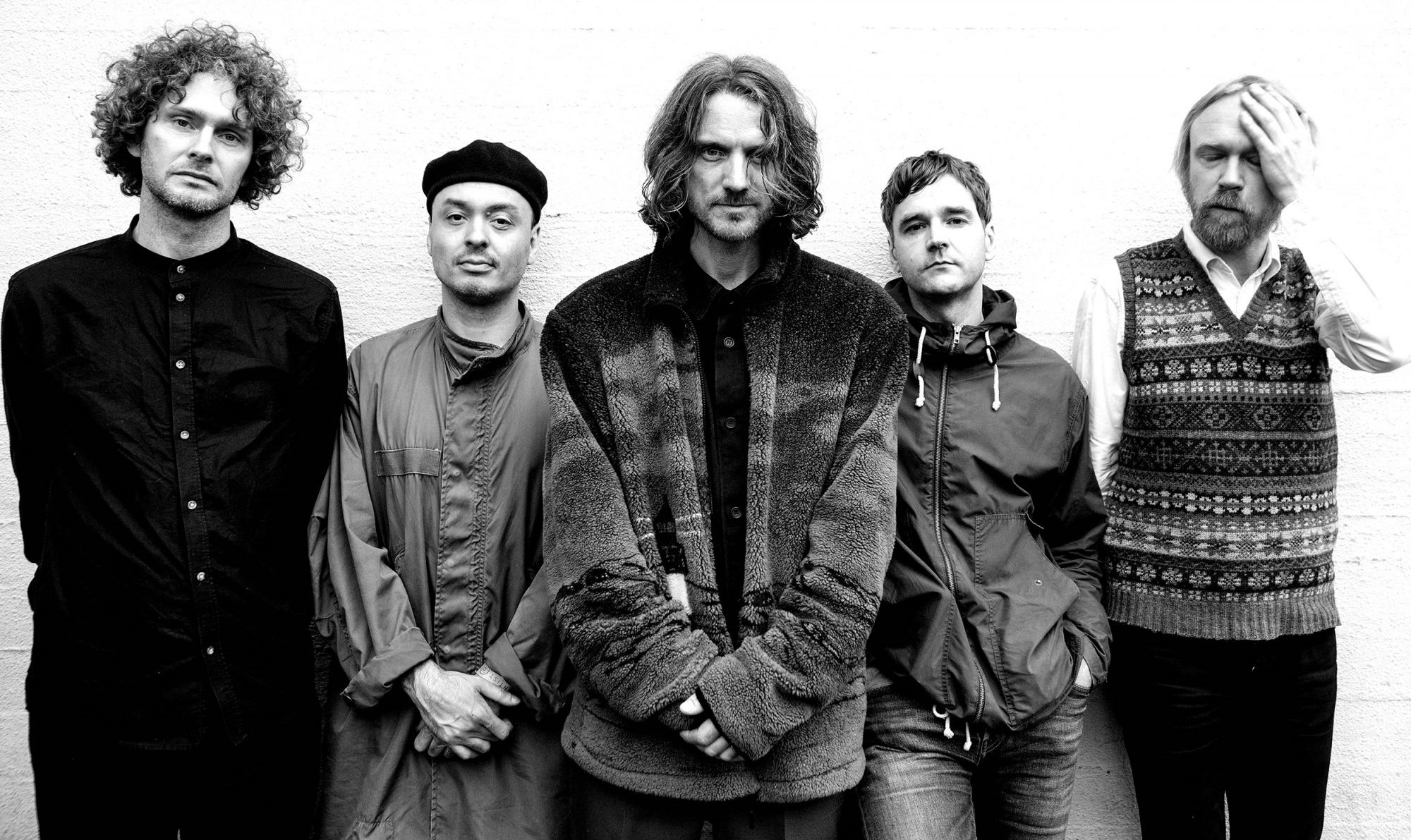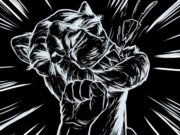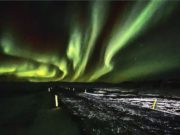THE EDITED PRESS RELEASE: “Gustav Ejstes has always been on his way to someplace else. The Swedish musician has been making records as Dungen for two decades now, and while he’s been lauded as one of the sharpest and most adventurous musicians in psychedelic music since 2004’s breakthrough Ta Det Lungt, for Ejstes psych has always been only a starting point. Or maybe it’s something more like an ethos — psych with its promise of exploration, the way it prioritizes seeking out new sounds, of leaving the old self behind, of setting into the ether to see what else might be out there.
En Är För Mycket Och Tusen Aldrig Nog (One Is Too Much And A Thousand Is Never Enough) is the first Dungen record since 2016’s Häxan (which they wrote as a score for the 1926 animated film The Adventures of Prince Achmed), and the first proper Dungen studio album since Allas Sak was released in 2015. If we’re thinking of psych-rock as a genre, with its readymade tropes — fuzz guitars, shimmering harmonies, pastoral textures — it’s possibly the least psychedelic record Ejstes has ever made. But if psych is really about transcending what’s come before in favor of new ways of seeing and hearing, then the opposite is true.
And that means En Är För Mycket Och Tusen Aldrig Nog goes further out than any Dungen record before it. There are classic psych rave-ups, of course, and the kind of brilliant vocal harmonies Ejstes has long made his trademark. There are soft, shuffling grooves that transform into wide-eyed cosmic revelations. There are intimate songs guided by Ejstes and his piano, which he plays so gently it sounds like he’s trying not to wake someone in the next room.
And, perhaps most surprisingly, there’s a bit of turntable scratching, courtesy of Ejstes himself. Monstrous fills from drummer Johan Holmegard frequently blend with frenetic drum ’n’ bass programming inspired by the countless U.K. hardcore jungle mixes from the ’90s that Ejstes has been listening to (“that’s what I’m obsessed with right now,” he says). At times, the album verges on ecstatic Screamadelica-style sunshine pop; occasionally it clicks around 160 bpm. On Nattens Sista Strimma Ljus, guitars skip like a synth pattern over a shaggy drum beat that sounds both like a late ’60s blowout and late ’80s acid house freakout while Ejstes’ vocal melody doesn’t quite resolve, hanging in the air like an uncomfortable question, full of self-confident insouciance.
While the textures might seem unusual for a Dungen record, Ejstes insists these sounds have inspired him throughout his career — even when they haven’t seemed to. “If you take Mitch Mitchell, Public Enemy and Swedish psych-organ player Bo Hansson, and you put that in a pot, that’s jungle for me. It’s all about the breaks,” he says. “And these layers of noise. With fuzz guitar, it’s noise under control. It’s the same with turntable scratching for me—feedback and shit, it’s all the same.”

En Är För Mycket Och Tusen Aldrig Nog was recorded in pieces beginning in 2017 in Gothenburg with producer Mattias Glavå, who last worked with Ejstes on Allas Sak. Glavå’s creative input was crucial to the record, and helped Ejstes to challenge his preconceptions of how his own music might sound. “We’d be in his studio, where he has all this amazing gear, and he’d be encouraging me to go with every weird idea and not to feel any pressure,” Ejstes says. “He would say, ‘Let’s use this rhythm box or this sample or this loop,’ and I’d be like, ‘Can we do that on a Dungen record?’” Likewise, Ejstes’ bandmates — guitarist Reine Fiske and bassist Mattias Gustavsson, in addition to Holmegard — encouraged him to push his ideas further. “It really took a lot of courage to go to the guys and play this stuff for them,” he says.
This approach bears fruit on Möbler, an album highlight built off of a shuffling bossa-nova groove and an echoey organ. Like many a Dungen song before it, the song rockets into the stratosphere, with Holmegard’s drums trying to burst their way out of the song’s confines. But once it’s up there in cold orbit, the song wanders like an adrift satellite, trying to bounce its signal off of something recognizable. It’s a surprisingly aching song, tender in its sense of isolation. The same mood is picked up in Klockan Slår Den Är Mycket Nu where, between moments of vaporwave soft-psych and choppy rhythms, a bit of tick-tocking percussion and Ejstes’ careful piano phrasing suggest both the decadence and loneliness of late nights.
For all its innovation, it’s this sense of clarity and candor that Dungen hasn’t really explored before. As its title suggests, many of En Är För Mycket Och Tusen Aldrig Nog’s songs find their emotional center in Ejstes’ relatively recent sobriety. “It’s groundbreaking for me,” he says. “My life has changed, drastically, in the last five years.” En Är För Mycket Och Tusen Aldrig Nog is the first album Ejstes has recorded without being under the influence. Like many newly sober artists, he was initially worried that his creative abilities were tied to using. “But the music is so strong in itself for me,” he says. If anything, sobriety has taken him more deeply into the music than he ever has been. “It has actually become even more trippy to experience music if you don’t take away the edges of life. It gets very real.” You can trace Ejstes’ struggles through the tracklist: Om Det Finns Något Som Du Vill Fråga Mig (If There’s Something You Want to Ask Me About), Var Har Du Varit? (Where Have You Been?, a track first released on the Self Discovery for Social Survival soundtrack and reimagined here), Klockan Slår Den Är Mycket Nu (The Clock is Ticking, It’s Late). So many of these songs bear the weight of pain, and even at their most sonically ambitious, they’re always emotionally direct.
And that means Ejstes is able to dial things back when he wants, too. Skövde, named for the town where he grew up, opens the album with a bright, strummy melody whose bittersweet and nostalgic atmosphere — “it’s about my elder brother and a bunch of friends,” Ejstes says — makes it feel like a latter-day Wilco tune, while the bright, blinding harmonies and rattling fills of Om Det Finns Något Som Du Vill Fråga Mig come straight from Allas Sak. Höstens Färger unrolls with the simple domesticity of classic Paul McCartney, complete with a George Harrison-esque lead.
Since breaking through with Ta Det Lungt, Gustav Ejstes has used Dungen as a way to chase down and take apart the music that he finds interesting, whether it’s Scandinavian folk, freak-fried acid rock, jazz, or jungle. That sense of constant movement, of itching to see where else he can go, has meant regularly pushing himself through new incarnations of himself. “Some artists, you feel like, ‘stick to your guns, the first three albums were so much better.’ But I can’t stay in one box,” he says. On En Är För Mycket Och Tusen Aldrig Nog, Ejstes finds that the wildest trips lead within.”









































